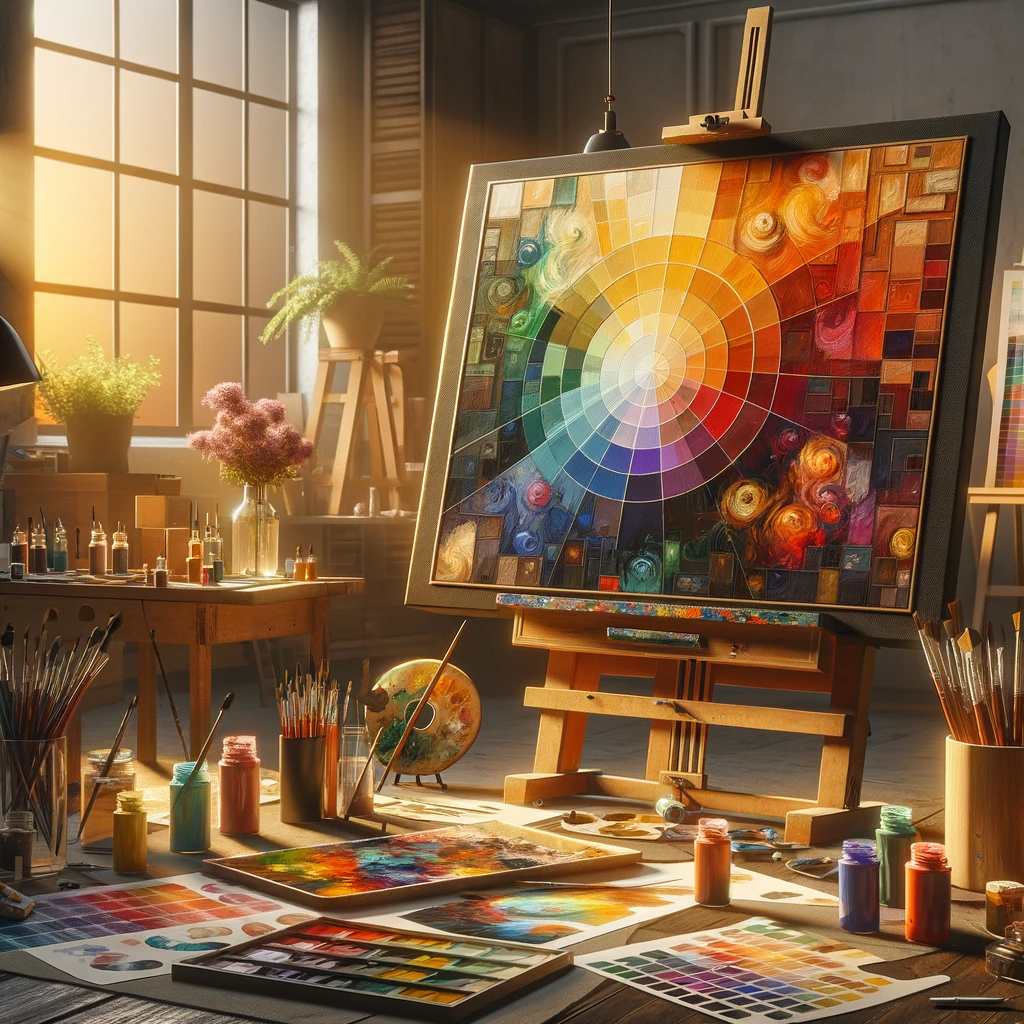Do you ever wonder how renowned artists create those captivating masterpieces that seem to come alive on canvas? The secret lies in a fundamental aspect of art – Color Theory. In the world of oil painting, understanding color theory can elevate your artwork to new heights. Join us on a colorful journey as we explore the mesmerizing world of oil painting and delve deep into the art of mixing and blending colors to create breathtaking compositions.

Unveiling the Artistic Palette
Oil painting is a medium that offers artists a unique depth of color and texture. Before we plunge into the world of color theory, let’s start with the basics. Every artist’s toolkit begins with the palette. The palette is your canvas for mixing and blending colors. Understanding your palette is the first step to mastering color theory in oil painting.
The Primary Colors
Remember learning about primary colors in elementary school? Red, blue, and yellow – these are the foundation of all colors. In oil painting, mastering the use of primary colors is essential. These colors cannot be created by mixing others, making them crucial for achieving the perfect shades and tones in your artwork.
The Color Wheel
Next, let’s explore the color wheel. It’s like a compass for artists, guiding you to create harmonious and balanced compositions. The color wheel consists of primary, secondary, and tertiary colors. Learning how to navigate this wheel will allow you to create stunning color combinations and achieve color harmony in your paintings.
Understanding Color Relationships
Colors have relationships, just like people. Complementary colors, analogous colors, and triadic color schemes – these are the building blocks of creating dynamic and visually pleasing compositions. By mastering these relationships, you can evoke various emotions and moods in your art, from calm and serene to vibrant and energetic.
The Magic of Value and Saturation
Color isn’t just about hue; it’s also about value and saturation. Value refers to the lightness or darkness of a color, while saturation defines its intensity. Learning to manipulate these aspects can add depth and dimension to your oil paintings. A subtle shift in value or saturation can completely transform the mood of your artwork.
The Power of Color Mixing
Now comes the exciting part – color mixing. With oil paints, you have the advantage of working with a slow-drying medium, allowing for ample time to blend and experiment. Discover how to create an endless array of colors by mixing and layering pigments. Experimentation is key to finding your unique style and palette.
Tips and Techniques from the Masters
To truly grasp color theory in oil painting, learn from the masters. Study the works of iconic artists like Vincent van Gogh, Claude Monet, and Johannes Vermeer. Analyze their use of color and brushwork to gain insights and inspiration for your own creations.
Practical Applications and Exercises
To hone your skills, try practical exercises that focus on color theory. Create a color wheel, experiment with limited color palettes, or paint a still life using complementary colors. These exercises will help reinforce your understanding and improve your abilities as an artist.
Conclusion: A World of Color Awaits
In the world of oil painting, color theory is your gateway to endless creativity and expression. By mastering the art of color, you can infuse life into your canvases, captivate your audience, and create timeless masterpieces. Remember, practice makes perfect, so don’t be afraid to experiment and explore the world of color theory in oil painting. Your artistic journey has just begun, and a world of vibrant possibilities awaits you.
As you embark on your colorful adventure in oil painting, remember to embrace the fundamentals of color theory. From the primary colors to the intricacies of color relationships, you have the tools to breathe life into your artistic vision. So, pick up your brushes, prepare your palette, and let the world see your masterpiece come to life with the magic of color.
